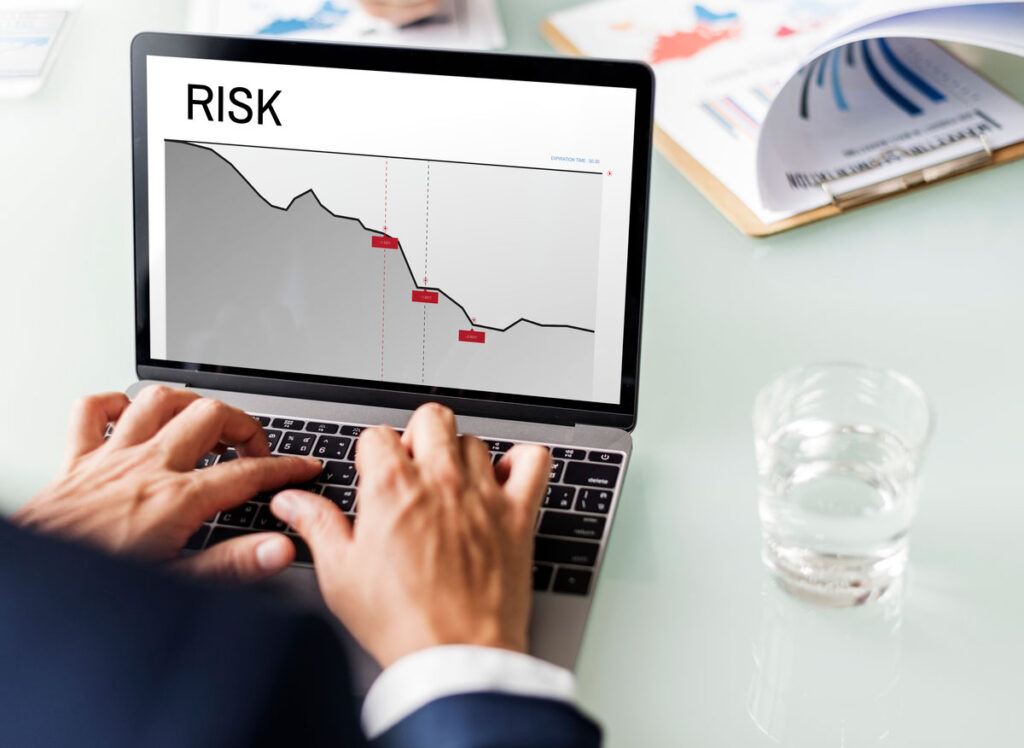Exclusive Neuroject Article: In an era defined by unprecedented global interconnectivity and rapid technological advancements, the management of risks has become a cornerstone of success for organizations, industries, and projects worldwide. Understanding the scope and significance of a risk management plan is paramount, as it can have a profound impact on an entity’s ability to thrive, adapt, and innovate.
A risk management plan, in its essence, is a systematic process designed to identify, assess, and mitigate potential threats or uncertainties that could jeopardize the achievement of objectives. These objectives encompass a wide spectrum, ranging from financial stability and project success to reputation preservation and regulatory compliance.
The imperative of risk management is underscored by stark statistics. According to a global survey by the Project Management Institute, over 90% of high-performing organizations actively practice risk management as a strategic tool for growth and competitive advantage. Conversely, entities that overlook or underemphasize risk management may find themselves exposed to unforeseen challenges, potentially leading to financial losses, missed opportunities, and reputational damage.
Risk management is not just a defensive strategy but a proactive enabler of success. According to the Project Management Institute, effective risk management increases the chances of project success by an impressive 73%. The insights gained from risk management plan inform strategic decision-making, empower organizations to innovate and enhance resilience in the face of turbulent environments.
Table of Contents
What is Construction Risk Management?
Risk management, within the realm of project management, involves the careful handling of potential risks that might affect a project. The management of these risks is undeniably one of the pivotal aspects of effective project management.
The risk management process encompasses the following key phases:
- Risk Identification: The initial step in dealing with project risks is to pinpoint them. This necessitates drawing upon data sources like historical project information or insights from subject matter experts to assess all conceivable risks that could impact your project.
- Risk Assessment: After identifying the potential project risks, it’s imperative to rank them based on their likelihood and the magnitude of their impact.
- Risk Mitigation: Subsequently, it becomes crucial to formulate a contingency plan that outlines actions to mitigate these risks and designates team members as risk owners responsible for monitoring and controlling these risks.
- Risk Monitoring: Risks must be continuously monitored throughout the project’s life cycle to ensure they remain under control. If a risk surpasses a predefined threshold and its conditions are met, it could imperil the entire project plan. Typically, a project is not susceptible to just a single risk; there exist multiple categories of risks that necessitate assessment and discussion with project stakeholders.
This underscores the need for risk management to be an ongoing process, both proactive and reactive, that persists throughout the project’s life cycle. Let’s now delve into the definition of a risk management plan.

What is a Risk Management Plan (RMP)?
A risk management plan outlines the execution of your project’s risk management process. This entails specifying the budget, tools, and methods to be employed for activities related to risk identification, assessment, mitigation, and monitoring.
A typical risk management plan typically incorporates the following components:
- Methodology: This section defines the tools and approaches to be utilized for conducting various risk management activities, including risk assessment, risk analysis, and strategies for mitigating risks.
- Risk Register: The risk register is a document where you can record all the information related to risk identification for your project.
- Risk Breakdown Structure: This chart enables the identification of risk categories and the hierarchical organization of project risks.
- Risk Assessment Matrix: In this section, a risk assessment matrix is used to evaluate the likelihood and impact of project risks, facilitating their prioritization.
- Risk Response Plan: The risk response plan is a project management document that elucidates the strategies for risk mitigation that will be implemented to manage project risks.
- Roles and Responsibilities: This segment outlines the roles and responsibilities of the members of the risk management team, particularly as risk owners, who are responsible for monitoring project risks and overseeing the actions taken to address them.
- Budget: This part of the plan identifies the financial resources required to carry out the risk management activities.
- Timing: An element that defines the schedule for executing the risk management activities.
Suggested article to read: What is Risk Management and Why is it Important?
How to Create a Risk Management Plan (RMP)
In every project, be it web design and development, construction, or product design, risks are an inherent aspect of project management. This underscores the importance of proactively addressing them through the formulation of a risk management plan. The steps for crafting a risk management plan are detailed below.
1. Risk Identification
Risk identification is an ongoing process that commences during the initial project planning phase and continues throughout the project’s life cycle. While some risks are well-known, others may require further investigation to uncover. To achieve this, you can construct a risk breakdown structure to identify all project risks and categorize them into specific risk categories. This can be accomplished by consulting project stakeholders and industry experts. Many project risks can be classified into risk categories such as technical or organizational, and further subdivided into specific sub-categories such as technology, interfaces, performance, logistics, and budget, among others. Additionally, a risk register can be created to provide a centralized repository for all known risks discovered during the identification phase.
2. Risk Assessment
In this phase, you will evaluate the potential impact of risks, both qualitatively and quantitatively. This involves assessing the likelihood of a risk occurring and the extent to which it would affect your project. You will then create a risk assessment matrix to visualize this information.
To begin, assign a probability score to the likelihood of each risk, ranging from low to high. Simultaneously, categorize the impact of each risk as low, medium, or high, and assign corresponding scores. This process allows you to gauge the probability of a risk affecting the project’s success and its urgency in requiring a response. To enhance understanding among the risk management team and project stakeholders, calculate an overall risk score by multiplying the impact and probability scores.
3. Create a Risk Response Plan
A risk response plan outlines the actions to be taken to mitigate project risks when they materialize. This plan incorporates strategies for risk mitigation, which may involve investments of time, budget, or other resources. Therefore, it is essential to allocate the necessary resources, time, and funding for risk management before finalizing the risk management plan.
Suggested article to read: Risk Management Examples
4. Assign Risk Owners
Furthermore, it is crucial to designate a risk owner for each project risk. These individuals bear the responsibility of monitoring their assigned risks and overseeing the execution of risk response actions if necessary. As you compile your risk register and risk assessment matrix, be sure to list the designated risk owners. This clarity ensures that everyone knows who is responsible for implementing risk response strategies when project risks arise.
It’s advisable to document the specific risk response for each project risk in the risk register and obtain approval from all stakeholders before implementation. This practice allows for a clear record of issues and their resolutions, which can be reviewed once the project is completed.
5. Understand Your Triggers
Triggers should be considered both when a risk has impacted the project and during project milestones as a means of reviewing progress. If a risk has materialized, consider reclassifying existing risks.
Even if triggers have not been met, it is prudent to devise contingency plans as the project advances. Conditions for certain risks may change or cease to exist after specific project milestones have been reached.
6. Make a Backup Plan
View your risk register and risk assessment matrix as living documents. The classification of project risks can change at any point during the project. Consequently, it is essential to develop contingency plans as part of your process. This involves identifying new risks during project milestones and reevaluating existing risks to determine if any conditions for those risks have changed. Any reclassification of a risk necessitates adjustments to the contingency plan.
7. Measure Your Risk Threshold
Measuring your risk threshold involves determining which risks are deemed too high and consulting with project stakeholders to evaluate whether it is worthwhile to continue the project, considering factors such as time, budget, and scope.
Typically, risk thresholds are determined by identifying risks with a “very high” score or multiple “high” scores. Consultation with the leadership team and project stakeholders is essential to assess whether the project may be at risk of failure. Risks that surpass the risk threshold require additional consideration.

Benefits of a Risk Management Plan (RMP)
A Comprehensive Risk Management Plan (RMP) is an indispensable tool for organizations and projects of all sizes and types. It offers numerous benefits that contribute to the overall success and sustainability of endeavors. Here are some of the key benefits of having a well-structured and comprehensive risk management plan:
- Risk Identification: A well-rounded RMP enables systematic detection of potential risks, whether they are known or concealed. This proactive approach helps in addressing potential issues early, thus saving valuable resources and preventing crises.
- Prioritization: Through risk assessment and analysis, an RMP aids in ranking risks based on their possible impact and likelihood. This allows organizations to efficiently focus their resources on mitigating the most critical risks.
- Resource Allocation: With an RMP in place, resources, whether financial, human, or time-related, can be allocated more effectively. This ensures that resources are utilized efficiently to address identified risks.
- Enhanced Decision-Making: A clear grasp of potential risks offers decision-makers valuable insights for more informed and rational decision-making, reducing the chances of choices leading to adverse consequences.
- Proactive Risk Mitigation: An RMP enables the development of proactive strategies for risk mitigation. This includes contingency plans, risk response measures, and preventive actions, all aimed at minimizing the impact of risks.
- Cost Efficiency: Effective risk management plan through an RMP can result in cost savings by reducing the financial impact of potential risks that might lead to project delays, budget overruns, or other costly repercussions.
- Boosted Stakeholder Confidence: Stakeholders, be they investors, clients, or team members, have greater confidence in projects or organizations that demonstrate a commitment to risk management plan. An extensive RMP can enhance transparency and trust.
- Project Achievement: The implementation of a well-structured RMP increases the likelihood of project success, aiding in the realization of project objectives within the specified time and budget, leading to customer satisfaction and positive outcomes.
- Adaptability: As projects evolve, new risks may surface, and conditions can change. A comprehensive RMP allows for adaptability in risk management, accommodating evolving circumstances.
- Legal and Regulatory Compliance: Many industries are subject to legal and regulatory obligations related to risk management. Having an RMP ensures adherence to these requirements, reducing the risk of legal complications and penalties.
- Continuous Enhancement: Through ongoing risk monitoring and evaluation, an RMP fosters a culture of continuous improvement. Lessons learned from risk management activities can be applied to future projects, enriching organizational knowledge and capabilities.
- Competitive Edge: Organizations with a well-implemented RMP often gain a competitive advantage. They are better equipped to navigate challenges and uncertainties, making them more resilient and appealing to clients and partners.
A Comprehensive Risk Management Plan is a vital asset for organizations and projects. It not only helps in mitigating the negative consequences of risks but also cultivates a culture of proactive risk management plan, ultimately improving resource allocation and decision-making. This, in turn, contributes to the overall success and sustainability of endeavors, providing a competitive edge in an ever-evolving and uncertain business environment.
Suggested article to read: The Risk Management Process
Trends in Risk Management for 2024
Risk management is a field that constantly adapts to the changing business environment and emerging challenges. In 2024, we observe several prominent trends that are reshaping the risk management landscape, reflecting the evolving nature of risks and the demand for more sophisticated risk mitigation strategies. Here are key trends in risk management for the year 2024:
- Advanced-Data Analysis:
- In 2024, organizations are increasingly leveraging advanced data analytics, artificial intelligence, and machine learning to enhance their risk management capabilities. These technologies enable organizations to identify, evaluate, and mitigate risks more effectively by analyzing large volumes of data in real-time. Predictive analytics allows for early risk detection, enabling proactive measures.
- Focus on Cybersecurity Risks:
- With the rise in the frequency and complexity of cyber threats, a cybersecurity risk management plan takes center stage in 2024. Organizations are making substantial investments in safeguarding sensitive data and critical systems, emphasizing threat intelligence, vulnerability management, and incident response planning.
- Environmental, Social, and Governance (ESG) Risks:
- ESG risks, encompassing concerns like climate change, social responsibility, and governance issues, are gaining prominence in risk management strategies. Stakeholders are demanding increased transparency and accountability in these areas. Organizations are integrating ESG risk assessments into their overall risk management plans to mitigate potential reputational and financial risks.
- Enhancing Supply Chain Resilience:
- Supply chain disruptions, exemplified by the COVID-19 pandemic, underscore the need for robust supply chain risk management plan in 2024. Organizations are diversifying their supply sources, adopting technology solutions for real-time tracking, and conducting risk assessments throughout the supply chain.
- Navigating Regulatory Compliance:
- Ever-evolving regulatory requirements are a major focus in 2024. Organizations are dedicated to staying abreast of changes in regulations about data privacy, environmental standards, financial reporting, and more. Managing compliance risks is crucial to avert legal consequences and safeguard reputation.
- Crisis Management and Resilience:
- Given the unpredictability of global events, organizations are placing greater importance on crisis management and resilience planning. This involves scenario planning, strategies for crisis communication, and business continuity plans to ensure uninterrupted business operations during various disruptions.
- Integrating Risk Management into Strategic Planning:
- In 2024, risk management is increasingly regarded as an integral part of strategic planning. Organizations are aligning risk management with their overall business goals and ensuring that risk considerations are integrated into decision-making processes.
- Evolving Risk Leadership:
- The role of Chief Risk Officer (CRO) is evolving, with CROs taking on more strategic responsibilities alongside their traditional risk oversight roles. They are closely collaborating with senior management to incorporate risk management into overall business strategies.
- Digital Transformation Risks:
- As organizations undergo digital transformations, new risks emerge. These include technology vulnerabilities, data security threats, and the need for robust digital risk management strategies. Striking a balance between innovation and risk mitigation is essential.
- Collaborative Risk Management Plan:
- Collaboration and information sharing among organizations, industries, and even governments to address shared risks are on the rise. This collaborative approach allows for a broader perspective on potential risks and the development of collective risk mitigation strategies.
Risk management plan in 2024 is characterized by technological advancements, a broader spectrum of risks, and an increasing recognition of the interconnectivity of risks. Organizations that stay ahead of these trends and adjust their risk management strategies accordingly are better positioned to excel in an increasingly intricate and uncertain world.

Valuable Insights for Effective Risk Management Plan
Managing risks is vital for the success and longevity of any organization or project. While establishing a strong risk management plan is the initial step, it’s equally important to follow recommended practices and apply key guidance. Here are some valuable insights for effective risk management:
- Ongoing Surveillance:
- Recognize that risk management is an ongoing process. Regularly monitor identified risks to detect any changes in their status and the potential emergence of new risks.
- Engage Stakeholders:
- Involve essential stakeholders, including team members, clients, and experts, in the risk management process. Their perspectives and knowledge can aid in identifying risks and creating effective mitigation plans.
- Transparent Communication:
- Maintain open and transparent communication channels. Convey risk assessments, response plans, and responsibilities to all team members to ensure everyone is well-informed.
- Quantify Risks:
- Whenever feasible, utilize quantitative methods to evaluate and quantify risks. This provides a more accurate understanding of potential consequences and probabilities, aiding in prioritization.
- Scenario Development:
- Create scenarios for possible risk scenarios. This helps in comprehending the repercussions of different risk outcomes and how to respond to them effectively.
- Risk Tolerance:
- Define the acceptable level of risk for your organization or project. Understanding this risk tolerance guides decision-making and risk response strategies.
- Risk Ownership:
- Assign clear responsibility for risks to designated individuals. These “risk owners” are responsible for monitoring risks and taking action as needed.
- Thorough Documentation:
- Maintain comprehensive records of risk assessments, response plans, and their outcomes. Proper documentation is crucial for accountability and learning from past experiences.
- Regular Evaluations:
- Periodically assess and update your risk management plan to adapt to changing circumstances, emerging risks, and lessons learned from past experiences.
- Testing and Practice:
- Conduct tabletop exercises and drills to assess the effectiveness of your risk response plans. This helps pinpoint areas of preparedness that need improvement.
- Resource Allocation:
- Ensure that you allocate the necessary resources, such as budget and personnel, for effective risk management plan. Adequate resources are essential for successful risk mitigation.
- Benchmarking:
- Compare your risk management practices with industry benchmarks and best-performing organizations. Gain insights from others and adopt successful strategies.
- Compliance with Regulations:
- Stay informed about relevant industry regulations and compliance requirements. Adhering to these standards minimizes legal and compliance risks.
- External Risk Assessment:
- From time to time, seek external expertise or third-party assessments to gain a fresh perspective on your risks and risk management strategies.
- Preparation for Crisis Communication:
- Develop a clear and efficient plan for crisis communication to maintain transparency and minimize damage to your reputation during crises.
- Keep It Simple:
- Avoid making your risk management plan overly complex. Use clear and simple language and strategies that can be easily understood and followed by all team members.
- Promote a Risk-Aware Culture:
- Cultivate a culture within your organization that is conscious of risk. Encourage all team members to be proactive in identifying and reporting risks.
- Support from Senior Management:
- Ensure that senior management is fully committed to and endorses the risk management process. Their support is crucial for implementing the best risk management practices.
- Training and Education:
- Offer training and educational resources to team members to enhance their understanding of risk management principles and best practices.
- Learn from Experience:
- Foster a culture of learning from both successes and setbacks. Analyze past risk events to continually enhance your risk management approach.
By incorporating these insights and adhering to best practices in your risk management plan, you can proactively detect, evaluate, and mitigate risks, ultimately enhancing your organization’s ability to effectively navigate uncertainty and increase its resilience.
Conclusion
The landscape of risk management plan in today’s interconnected and technologically advanced world is more critical than ever before. Risk management is not merely a precautionary measure; it is a strategic imperative that can determine the success or failure of organizations, industries, and projects on a global scale.
A robust risk management plan, as discussed in this article, is essential for identifying, assessing, and mitigating potential threats that may hinder the attainment of objectives. As supported by compelling statistics, high-performing organizations actively practice risk management plan to gain a competitive edge. In contrast, entities neglecting or downplaying risk management run the risk of encountering unforeseen challenges, including financial losses, missed opportunities, and damage to reputation.
Looking ahead to 2024, the risk management plan is evolving in response to emerging challenges and global shifts. Trends such as advanced data analysis, cybersecurity risk focus, ESG risk integration, and supply chain resilience enhancement underscore the adaptability and relevance of risk management strategies. Furthermore, the integration of risk management plan into strategic planning and the recognition of digital transformation risks represent forward-thinking approaches to navigating the complexities of modern business environments.
By embracing these insights and adhering to best practices, organizations can position themselves to not only survive but thrive in an ever-changing and uncertain world. A proactive risk management plan enhances an organization’s resilience, fosters a culture of adaptability, and enables it to make informed decisions, ultimately contributing to its long-term success and sustainability.
Resources:
project manager | Business Victoria | Logic Manager | Risk Optics | Open Text | Smart Sheet | Alert Media | Select Hub
For all the pictures: Freepik



